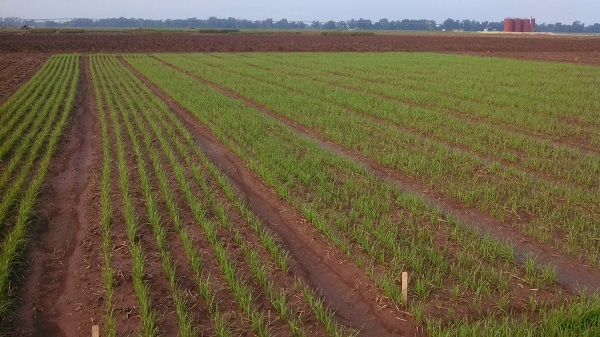November 13, 2014

The mid-November blast of freezing temperatures that hit much of the Southwest this week likely will not damage the state’s winter wheat crop.
Even newly emerged plants should survive the sub-freezing temperatures, says Dr. Clark Neely, AgriLife Extension small grains and oilseed specialist, College Station.
“It would have to get pretty darn cold for it to do any damage to the wheat,” Neely said. “If you have a healthy crop, winter wheat can handle temperatures below zero Fahrenheit prior to vernalization.”
Vernalization refers to a certain number of chilling hours a plant must experience before it switches from vegetative to reproductive growth, he said.
For the latest on southwest agriculture, please check out Southwest Farm Press Daily and receive the latest news right to your inbox.
Winter wheat can be damaged in certain instances, such as when a cold front comes through with a sudden 50-degree temperature swing, but even then it is rare, Neely added. “Soil temperatures are also still relatively warm, which will help protect plants.”
From reports Neely received from area specialists, temperatures got down to freezing in the more northern parts of the state on the morning of Nov. 10, and were headed to the mid-20s on Nov. 11, he said.
“I don’t expect to see damage, though,” Neely said. “I don’t think it got cold enough quick enough for us to see any damage.”
In fact, the early cold weather may be good for winter wheat, but may reduce fall growth for grazing.
“This cold snap should go a long way to hardening the crop off,” he said.
“Hardening off” refers to wheat acclimating to colder temperatures.
“Overall, we’re sitting pretty good for both canola and wheat crops across the state,” he said. “Most of the Blacklands [area] has recharged soil moisture profiles at the moment. This past week we got 1 to 3 inches across a wide swath of the state, from South Texas all the way up to Northeast Texas. The Rolling Plains and the High Plains could always use a bit more moisture, but they’re in a lot better shape than they were last year. So I think the crop is off to a good start up there too.”
Neely added that forecast of a “moderately wet” winter because of a weak El Nino would be “ideal” for the state’s wheat and canola crops.
Kansas crop is vulnerable
The sudden sharp drop in temperatures across Kansas Nov. 10-15 will certainly cause the wheat crop to go into dormancy. Whether it will damage the wheat to any degree depends on several factors, said Jim Shroyer, K-State Research and Extension crop production specialist.
“The moisture level in the topsoil will be important. Soil moisture was generally good in most of the state going into October. But the warm temperatures in October caused some of the wheat in the state to put on excessive amounts of topgrowth, which dried out the soil.”
The cold weather will be more likely to cause injury to wheat if the plants were showing drought stress symptoms. Also, dry soils will get colder more easily than wet soils.
Another important factor in wheat’s response to the cold is whether the wheat had time to become properly cold hardened, Shroyer added.
“Although the weather was warm overall in October and early November, there may have been enough cold nights to have allowed the wheat to develop cold hardiness,” Shroyer said.
The extent of the unusually large and rapid drop in temperatures from well above normal to well below normal is a concern, he added. If the wheat did not develop sufficient cold hardiness, it would become more susceptible to injury from the recent cold snap.
“We likely won’t know for sure about cold injury until next spring as the wheat comes out of dormancy,” he said.
The first thing producers will see is a lot of burndown from these cold temperatures, Shroyer explained. If the wheat was bigger than normal, the plants may look “rough” with a lot of brown dead-looking foliage on the soil surface.
“That doesn’t mean the plants are dead, however. The important factor will be whether the crown below the soil surface remains alive. Having a well-developed secondary root system will help the plants survive,” Shroyer said.
You May Also Like




